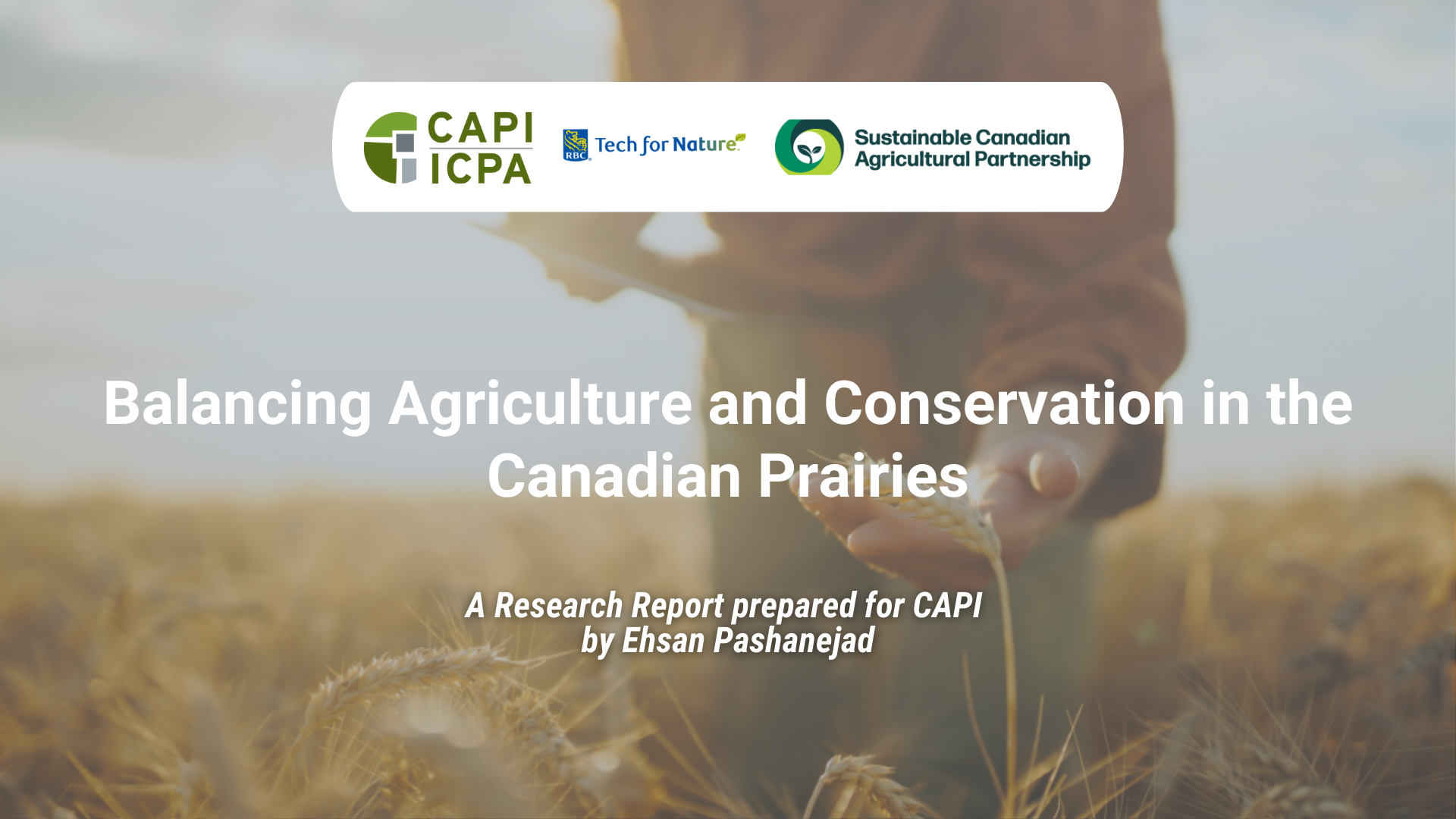Balancing Agriculture and Conservation in the Canadian Prairies

Note from CAPI
CAPI recognizes the importance of fostering and mentoring the next generation of thought leaders emerging from Doctoral programs across Canada, who are working in multi-disciplinary fields. Through CAPI’s Doctoral Fellowship program, CAPI offers a small, innovative group of young students the opportunity to apply their knowledge and expertise to some of agriculture’s most critical policy issues.
The fourth cohort of CAPI’s Doctoral Fellows (2024-2025) was tasked with focusing their research on policies needed to address pressures on Canada’s land base and natural resources arising from agricultural production in the face of climate change, biodiversity loss, global population growth and food security concerns. This paper is the final deliverable of the program, showcasing the interdisciplinary nature of the fellows’ research as it relates to mitigating trade-offs between conservation and intensive agricultural production on the Prairies..
This Fellowship is supported in part by the RBC Foundation through RBC Tech for Nature as part of CAPI’s larger environmental initiative, Policies for Land Use Agriculture (PLAN).
CAPI and the Doctoral Fellows would like to acknowledge the contribution of the four members of the Expert Advisory Committee who provided valuable feedback in the preparation of this report – Dr. Marie-Élise Samson, University of Laval, Dr. Tom Nudds, University of Guelph, Peter Sykanda, Ontario Federation of Agriculture, and Dr. Anatoliy Oginskyy, Alberta Ministry of Agriculture & Forestry.
Key Takeaways
- Natural landscapes, particularly grasslands and wetlands, play a pivotal role in sustaining multifunctionality. They are the primary drivers behind biodiversity conservation, water regulation, and carbon sequestration, even within intensively managed agricultural regions.
- Key ecosystem services hotspots represent strategic zones for conservation investment. The top 35% of landscape units—comprising about 19% of the Canadian prairies—account for more than half of key ecosystem services, while the remaining areas primarily support carbon storage, nutrient retention, and crop productivity.
- Evaluating multifunctional landscapes in the Canadian prairies can guide more targeted land management interventions. This can help policymakers and planners prioritize areas where ecosystem services can be protected or enhanced without undermining productivity. Future policies should build on this knowledge to support farm-level decisions and regional planning, aligning national commitments with practical actions on the ground.
- Areas with high ES diversity are often characterized by a mix of natural and agricultural land uses. They are ideal for aligning conservation and production goals. Incentive-based approaches like riparian buffers, agroforestry, and low-intensity farming can enhance service diversity while maintaining profitability.
- Effective policy implementation depends on cross-sector collaboration. Policymakers must engage farmers, Indigenous rights holders, researchers, and communities to co-develop practical, region-specific solutions that promote shared stewardship and sustainable outcomes.
